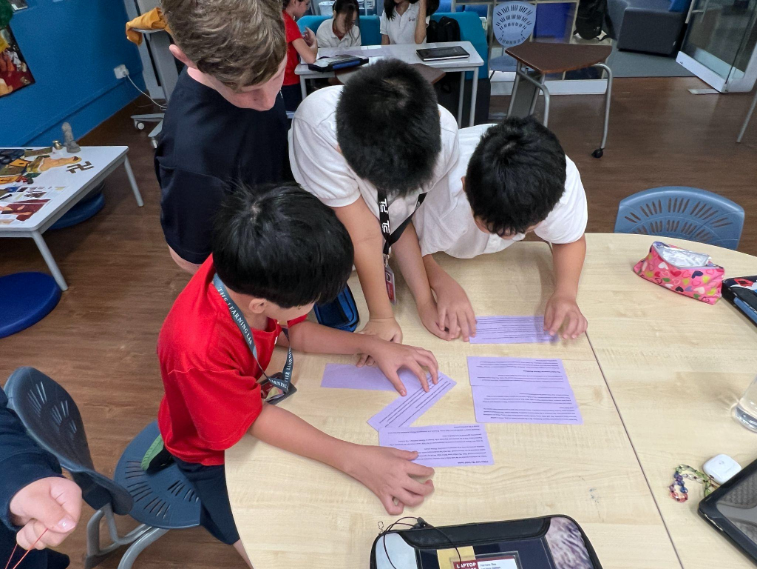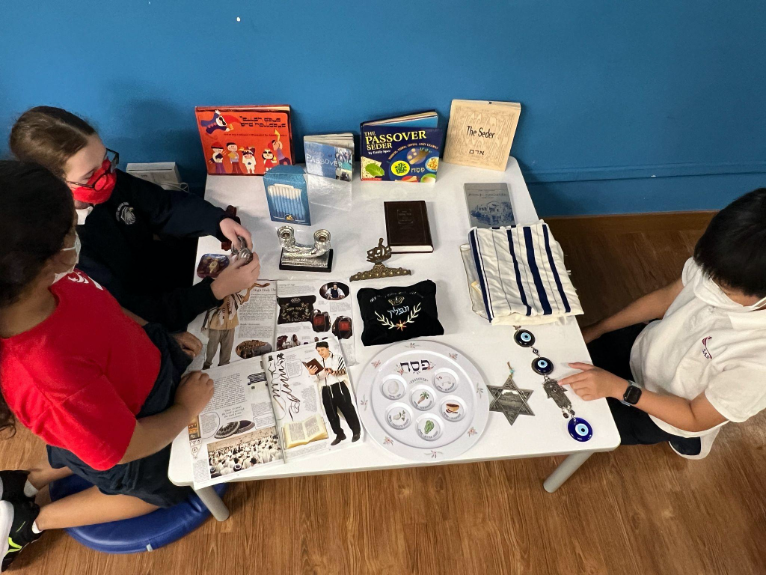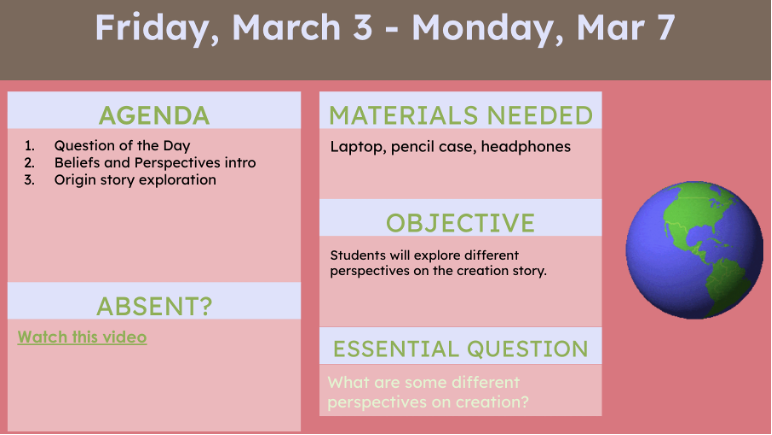Prepping Our Classes for Substitute Success
A MiddleWeb Blog

While the experience was not the same as me being in class, my students were able to move forward with their learning and be ready to pick back up when I returned. This is how I prepared my lessons for my absence.
Setting expectations
“The best offense is a good defense” is a phrase that also applies to substitute planning. If your students already know where to find the plans for the day, it makes it easier to get right to work. My students have a daily agenda in our unit slides where they can check for the plan, materials needed, homework, and a video that describes the daily class.
During COVID, I started making a brief video overview of the class (usually 3 – 5 minutes) that explains the directions for any assignments. I found that this helped absent students keep up and saved me from explaining things repeatedly.
So I’ve continued the practice. Now, when students inevitably ask at the beginning of class, “What did I miss?”, I can refer them to the video.
Educational apps have come a long way in their ability to be used asynchronously. Teachers can now schedule activities on Nearpod, Pear Deck, and Quizizz, among others, to be done at a student’s pace. Before assigning students to do an activity on one of these platforms, make sure you’ve done it with them in class at least once.

Students work in small groups to arrange sections of an article.
Organizing the lesson
At my school we often categorize learning options as Mild, Medium, and Spicy so that teachers and students can challenge themselves at a level that feels right for them. Knowing your classes (and substitutes), you can decide which option works best in your situation.
Each of these social studies lesson progressions has various activities: videos, articles, 360 tours, artifact exploration. When I know I will be out for multiple days, I like to mix the different activities, saving the Spicy plans for the most accessible content.
Mild
The most independent and easiest option is for students to work from one central document, completing a variety of tasks. Amanda Sandoval has the best templates and examples for this, but here is my own version for a social studies lesson on how artifacts impact a country’s identity.
You can decide whether to require all the activities or have students choose what they most need to know. What is key is that there is a central location for all of the work and there is a mix of ways to get the information.
Medium
If you feel like your class has learned to work well in small groups, you can have them work through stations and check in with the substitute as they go. The digital stations all take place at their tables and are centrally located on the same document. This allows the students to process material together and have some more fun in the class.
It’s helpful for them to know they will complete a collaboration self-assessment as a way to get insight on how it went. As part of our study of World Religions, students worked in groups on this lesson on Judaism. My favorite part of this lesson is the fun elements like completing a Wordle together and interacting with artifacts.

Students explore artifacts in small groups.
Spicy
I have a few ideas for classes that would work well with a lot of freedom. The first is to prepare a Breakout game for them on the content. I wrote about creating Breakout games a few years ago, and it has only gotten easier as technology has developed. Breakout games tend to get loud and exciting, which is why I consider it a spicy substitute activity.
Another activity would be to choose a list of categories on a topic and ask them to research and prepare PechaKucha slides (explained in this Middleweb post – scroll down) which they will post to a small group. I wouldn’t have them present to the whole class, but sharing in a group of 5 would be ideal.
Checking in with substitutes
I asked the permanent substitutes at our school what helps them feel prepared for classes. They like to have the plans as far in advance as possible and to get the class schedule with the times for each period (at our school, every grade has a different time schedule).

The daily agenda in our unit slides has the plan for the day and a link to the video explanation for the day in case the students or I am absent.
It’s also helpful to know who to turn to when there are challenges, whether it is the name of a responsible student in the class or a nearby teacher who can be called upon. The numbers for the attendance office and tech support are things I will now be adding to my sub plans.
The last thing we want to worry about during an extended absence is if our classes are going well. With organization and systems, we are able to help our students continue to thrive in our absence – and help our substitutes be successful in their important role.



































Thanks for sharing, Megan!
Thank you!
Thanks, Bruce. I am embracing Chat GPT for writing clues for my breakout games and it’s going so much faster!